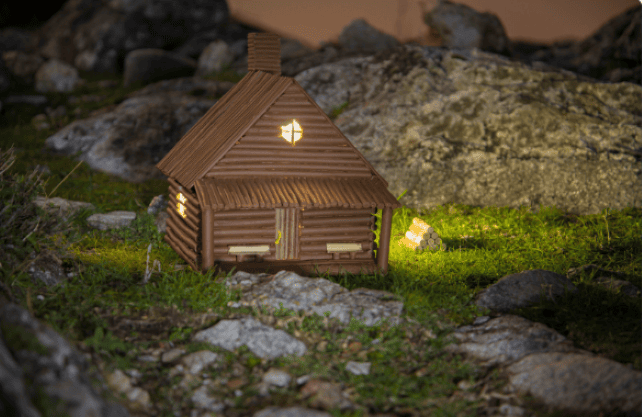
For many of us, the allure of tiny houses is undeniable. The promise of a simpler life, fewer possessions, and of course, a smaller carbon footprint. But amidst the pared-down space, one might ponder: where does nature fit in? The answer is simple and wonderfully green – indoor plants. Far from just an aesthetic accessory, indoor plants purify air, reduce stress, and create a sense of well-being. Dive into this guide to discover the best indoor plants to enhance your tiny living space naturally.
Succulents & Cacti: The Minimalists of the Plant World
For those new to the world of indoor gardening, succulents and cacti are perfect starters. These resilient plants are accustomed to dry, harsh conditions, which means they don’t need constant attention. Their unique shapes, colors, and textures provide ample variety. Place a collection on a sunny windowsill, or get creative with vertical planters to save on floor space.
Snake Plant (Sansevieria): The Air-Purifying Warrior
Revered for its air-purifying qualities, the snake plant is a popular choice for many tiny home enthusiasts. Not only does it convert CO2 into oxygen at night (most plants do this during the day), but it also removes toxins like formaldehyde and benzene from the air. Its tall, upright leaves take minimal floor space, making it perfect for corners.
Pothos & Philodendrons: The Cascading Beauties
If floor space is scarce, why not think vertically? Pothos and Philodendrons are vine plants that can be hung from the ceiling or draped along shelves. They are not only beautiful but also forgiving, thriving in varying light conditions. As an added bonus, they help in purifying the air.
ZZ Plant (Zamioculcas zamiifolia): The Tough One
For those who consider themselves forgetful gardeners, the ZZ plant is for you. These plants are drought-tolerant, require low light, and are known to survive even the toughest conditions. Their glossy, dark green leaves add a touch of elegance to any interior.

Spider Plant (Chlorophytum comosum): The Adaptable Friend
Spider plants are famous for their adaptability. They can thrive in indirect sunlight and can tolerate occasional neglect. Their arching leaves look fantastic in hanging baskets, and they’re known to spawn “babies” or plantlets, which can be potted to grow new plants or gifted to fellow tiny house dwellers.
Rubber Plant (Ficus elastica): The Bold Statement
A rubber plant can be a showstopper in any tiny house setting. With its large, glossy leaves, it adds a touch of the tropics. Young rubber plants are compact enough for small spaces but can be pruned as they grow. Moreover, they excel at removing pollutants from the air, making your living quarters fresher.
Ferns: The Humidity Lovers
For those who appreciate a touch of vintage charm, ferns are the way to go. Boston ferns or maidenhair ferns are ideal choices. They adore high humidity, so if you have a tiny bathroom with natural light, it could be the perfect spot for them. Besides, their feathery, delicate fronds add softness to interiors.
Peace Lily (Spathiphyllum): The Blooming Purifier
Peace lilies are not just about aesthetics. While their white blooms and dark green leaves are visually pleasing, they are also among NASA’s top-rated air-purifying plants. They help in removing formaldehyde, benzene, and other harmful toxins from the air. However, a note of caution: they can be toxic to pets, so keep them out of reach if you have curious furry friends.
Care Tips for Tiny Spaces
- Air Circulation: Plants, like humans, benefit from good air circulation. Ensure your tiny space is well-ventilated, especially if you house multiple plants.
- Diversify: Try to introduce a mix of plants that cater to different needs – some that require sunlight, some that thrive in shade, some that need regular watering, and some that are drought-tolerant. This way, you always have a flourishing green corner, regardless of the season.
- Potting and Soil: Always use good quality potting soil and ensure your pots have drainage holes. This prevents overwatering and root rot.

Maximizing Benefits
When introducing plants to your tiny home, consider the following:
- Positioning: Make sure plants get the right amount of light. Some plants, like succulents, love direct sunlight, while others, like pothos, prefer indirect light.
- Maintenance: Always check the watering needs of each plant. Overwatering can be just as detrimental as underwatering.
- Safety: If you have pets, ensure the plants you choose aren’t toxic to them.
Conclusion
Your tiny house might be small in size, but it doesn’t need to be void of nature’s wonders. By introducing indoor plants, you can not only breathe life and vibrancy into your space but also enjoy the numerous health and well-being benefits they bring. Whether you’re a seasoned green thumb or a budding gardener, there’s a perfect indoor plant waiting to find its place in your home. Embrace these green gems and watch as your tiny house transforms into a natural haven.






